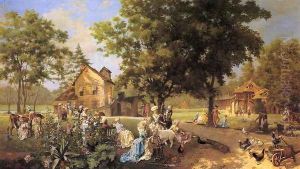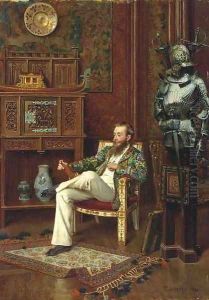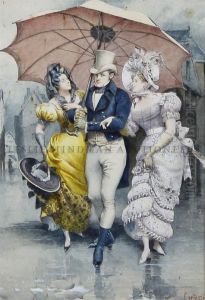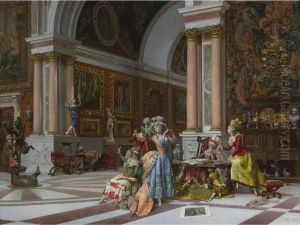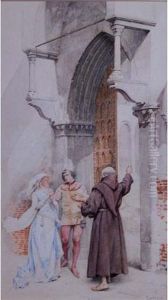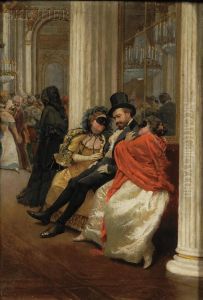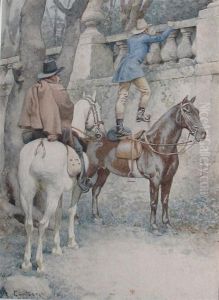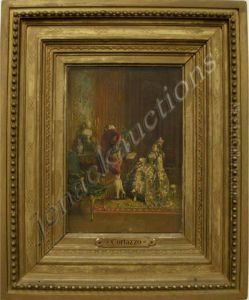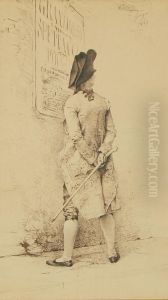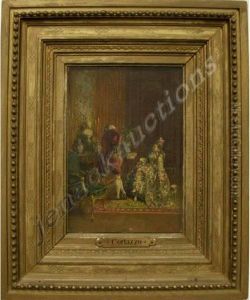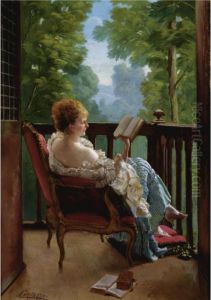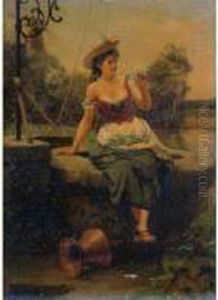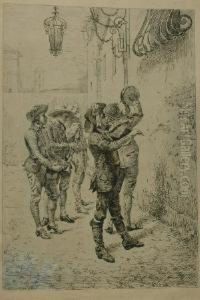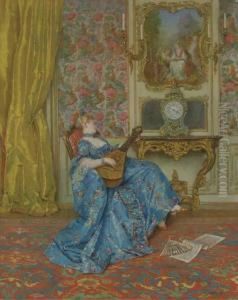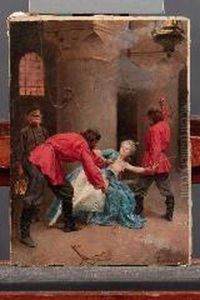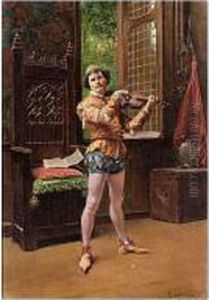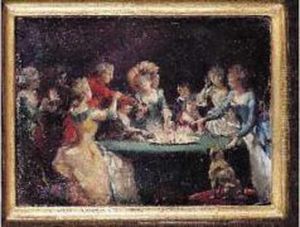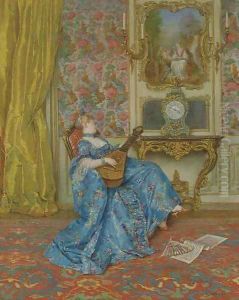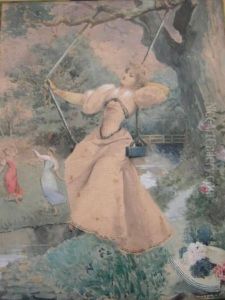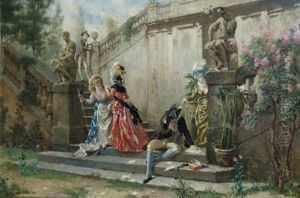Oreste Cortazzo Paintings
Oreste Cortazzo was an Italian-born painter, illustrator, and art instructor who spent a significant part of his career in the United States. Born in 1836 in Rome, Italy, Cortazzo demonstrated an early interest in art and was fortunate to receive his initial training in one of the world's most artistically rich environments. He studied at the Accademia di San Luca in Rome, an institution well-known for its rigorous training and long history of nurturing talented artists.
Cortazzo's work initially reflected the classical and Renaissance influences that permeated his education, but as he matured as an artist, he began to incorporate a more diverse range of styles and subjects. His talent was recognized early on, which allowed him to establish himself as a respected artist in Italy. However, like many European artists of the time, Cortazzo was drawn to the United States, where he moved in the mid-19th century.
Upon relocating to the U.S., Cortazzo settled in New York City, a burgeoning hub for artists and intellectuals from around the world. He quickly became involved in the local art scene and began teaching at the National Academy of Design, an influential art school where he instructed many students who would go on to have successful careers of their own.
As an artist, Cortazzo was known for his versatility. He produced works in a variety of mediums, including oil paintings, watercolors, and illustrations. His subjects ranged from classical scenes and portraits to landscapes and genre scenes depicting everyday life. Cortazzo's illustrations were published in several prominent publications, helping to disseminate his work to a broader audience.
Throughout his career, Cortazzo exhibited his work widely, participating in shows at major institutions such as the National Academy of Design and the Brooklyn Art Association. His paintings were well-received by critics and the public alike, and he earned a reputation as a skilled and thoughtful artist.
Oreste Cortazzo passed away in 1910, leaving behind a legacy of artistic contributions that continued to influence the American art scene. Although he may not be as widely recognized today as some of his contemporaries, his work remains a testament to the transatlantic artistic exchange of the 19th century and the rich cultural milieu in which he lived and worked.
